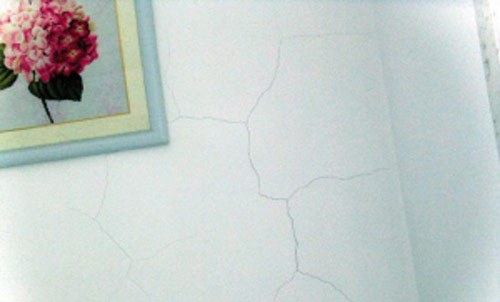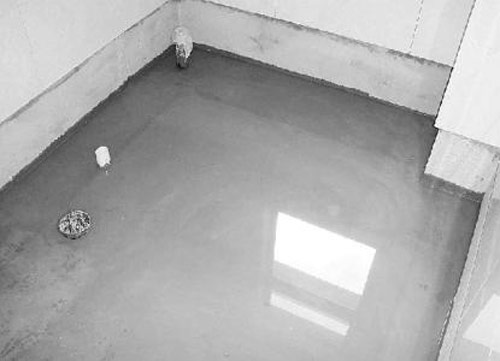At present, the most vulnerable areas for home improvement are the "sensitive areas" of all wood products, latex paint walls, and bathroom waterproofing. The quality disputes caused by these three aspects account for more than 80% of the total home decoration complaints. Therefore, when you carry out home improvement, you must pay special attention to the “sensitive areas†of these renovations.
First, the wood deformation: to maintain stable water content
A large number of wood products used in home improvement, such as curtain boxes, heating covers, fixed furniture, wooden lines, door and window covers, etc. Once the temperature and humidity in the room change greatly, some wood products will suffer from problems such as cracking, warping and deformation. It is due to the problem of the moisture content of wood. Generally, the moisture content of wood materials should be about 8%.

Experts advise:
The use of artificial boards is more often used. Wood-based panels are used to decompose wood into wood chips or wood pulp, and then re-manufactured. Because the physical structure of the wood is broken, the "deformation" of the wood-based panel is required when the temperature and humidity changes greatly. It is much smaller than solid wood. In addition, after all the wood products are installed, they must be painted once, not only to protect the wood products, but also to maintain the normal moisture content of the wood. All the timber should be placed for a few days after entering the site so that the moisture content of the wood is close to that of the new home. If wood products are near wet bathroom walls, be sure to apply 1-2 coats of paint on the back of the wood before installation. This will reduce wood deformation.
Second, cracking insulation wall: the use of decoration methods
Many new homes have new insulation walls with insulation. This type of wall decoration is very vulnerable to the problem of cracking latex paint. Mainly due to cracks in the walls of the cement, or cracks in the "insulation board" joints.

Experts advise: When dealing with the wall base, the first part of the crack chisel into "V"-shaped seams, then use "elastic putty" smooth, and then paste a layer of Dacron, kraft paper or bandage on the wall, the use of fiber Tension to ensure the integrity of latex paint film, this approach is relatively simple and easy, but the effect is general; either the wall surface insulation board removed, or remove the cement wall, in the insulation layer first install a layer of gypsum board Or "cement pressure plate", and then scrape putty on the top to do latex paint, this practice can remove all the irregular cracks, but this method is costly, construction is difficult; In addition, the use of flexible decorative materials For example, "elastic putty" can compensate the wall cracking problem to some extent.
Third, the bathroom leakage: waterproof edge smear in place
Many families in the renovation, the original bathroom tiles should be destroyed, laying new tiles, so you need to do a waterproof project in the bathroom wall, if there is a quality problem in the waterproof project, there will be leakage of trouble .

Experts advise: If you want to replace the bathroom floor tiles, in the original floor tiles chisel away, we must first use the cement mortar to level the ground, and then do the water treatment 2-3 times, and then do the closed water test more than 48 hours; bathroom wall The joints between the ground and the joint between the upper and lower water pipes and the ground, all waterproof paint must be applied in place; in the waterproof treatment, the wall is also about 30 cm high waterproof coating. The tiles must be tiled first, and the next row of tiles must be pressed on the tiles so that the water in the walls can be prevented from penetrating into the ground. However, if the bathroom wall is a non-load-bearing light wall, the entire wall should be painted with waterproof paint.
Renovation notices Three trees Lacquer tiles Paint Lacquer paint Lacquer paint Home improvement bathroom Waterproof bathroom wall tiles Bathroom tiles Bathroom tiles Bathroom door tiles Glued tiles
4 Channel Reagent Reservoirs,8 Channel Reagent Reservoirs,12 Channel Reagent Reservoirs,96 Well Reservoir,384 Well Reservoir, from Yongyue Medical, is made of strong clear polypropylene (PP). Low profile designation which is suitable for small volume robotic tips used in high flux instruments. In the automatic pipetting process, the reservoir can perfectly overcome the surface tension of the liquid and minimize residual liquid
Our Reservoir Plates are perfect for storing volumes of samples to be pipetted into other microplates for further applications.
These plates are manufactured in cleanroom facilities which are certified free of RNase, DNase, human genomic DNA and endotoxins. We use only the highest medical grade virgin polypropylene with high resistance against chemicals such as DMSO, phenol, and chloroform. Pyramid channel bases are best for small volume recovery. The standard SBS footprint ensures its compatibility with automation.
Our sturdy and reusable reagent reservoirs can stand-up to autoclaving, exposure to temperature extremes, and chemicals. Made from polypropylene these reservoirs offer a stable base that makes them suitable for manual procedures as-well-as automation.
These fully automation compatible reservoirs feature an SBS footprint and can be used in plate handlers or stackers. To minimize space on platforms (when a stacker is not in use) or under hoods, these reservoirs can be filled and stacked.
Conical Bottom Design To Save Expensive Reagents
DNase/RNase & Pyrogen Free
Stable at -80℃
Conformed to ANSI/SBS Standards
96 Well Reservoir,Reagent Reservoir,Reservoir Plate,12 Channel Reservoir,8 Channel Reservoir,384 Well Reservoir
Yong Yue Medical Technology(Kunshan) Co.,Ltd , https://www.yonyue.com